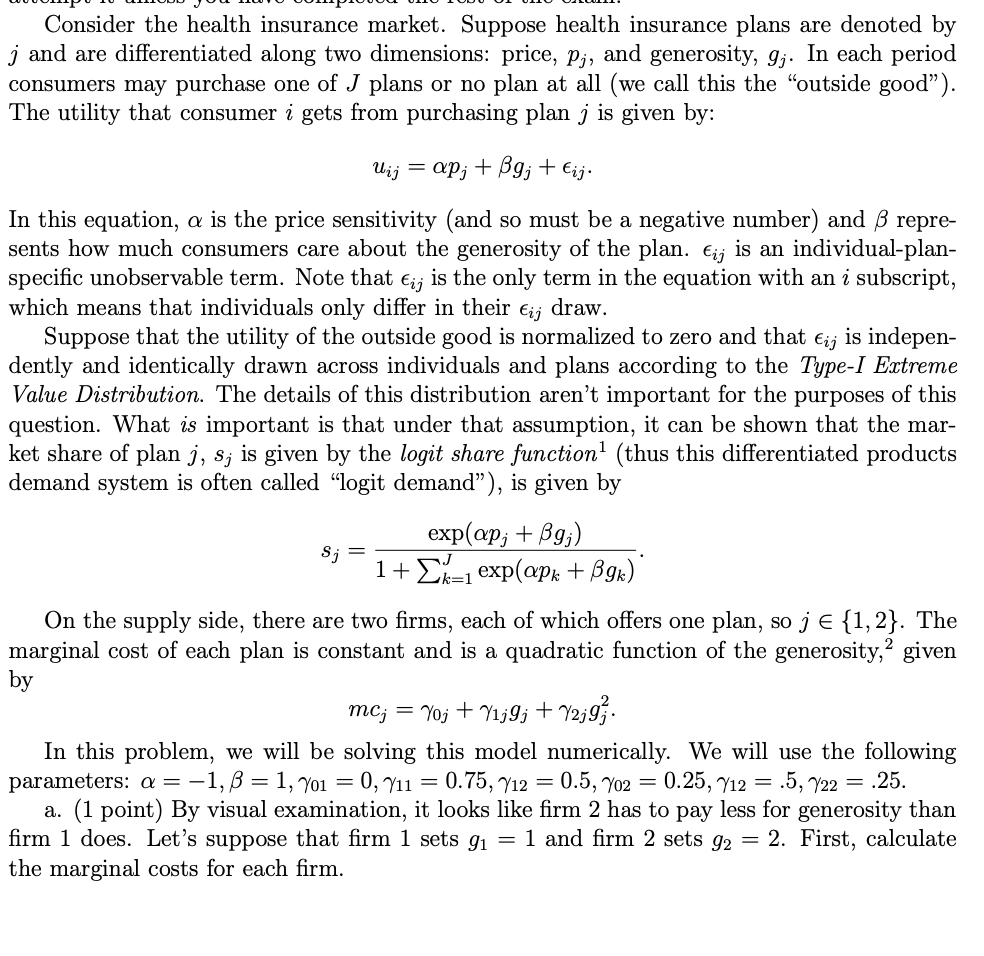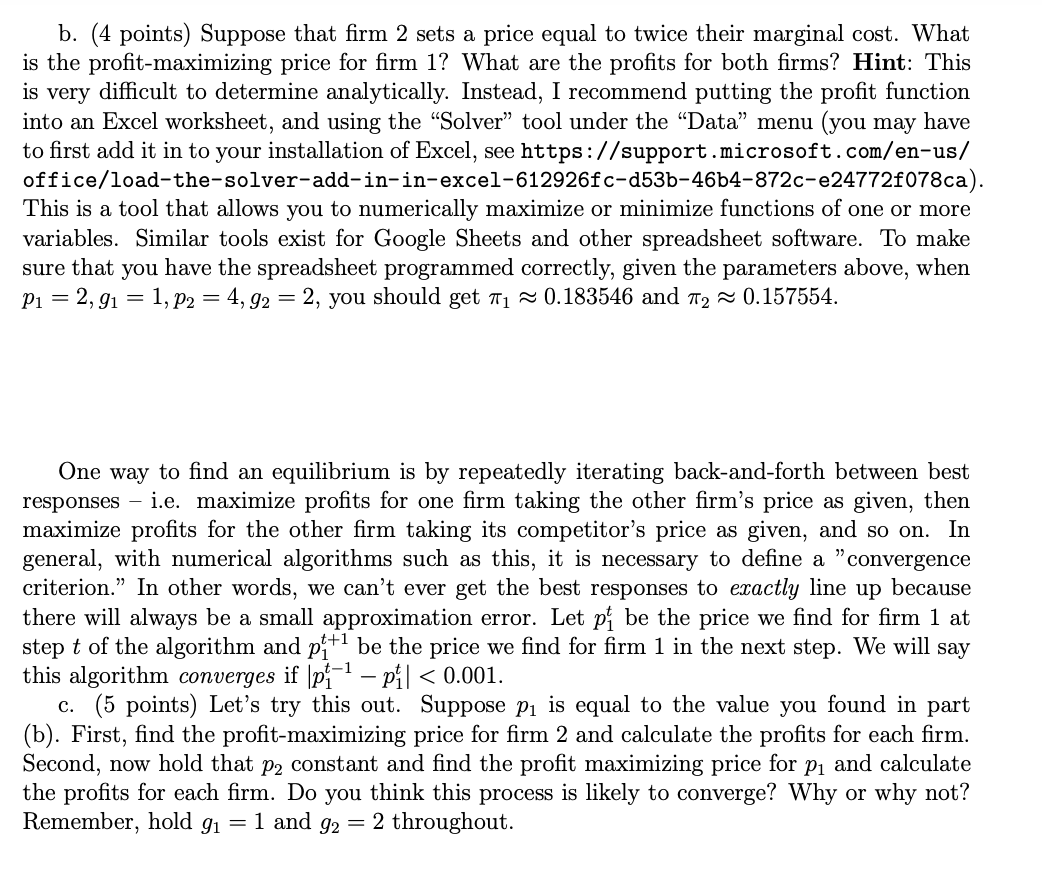This requires the use of an excel sheet
wuuuusru J.\" \"4.14uIlu Jul... '4.\"('4 \"usaarsuuuu \"4..\" Luuu '1'. I441.\" wag-us. Consider the health insurance market. Suppose health insurance plans are denoted by j and are diiferentiated along two dimensions: price, pj, and generosity, 93-. In each period consumers may purchase one of J plans or no plan at all (we call this the \"outside good\"). The utility that consumer 3' gets from purchasing plan 3' is given by: \"a; = 0493' + 1693' + Eij- In this equation, 0: is the price sensitivity (and so must be a negative number) and )6 repre- sents how much consumers care about the generosity of the plan. 6,,- is an individual-plan- specic unobservable term. Note that 6,,- is the only term in the equation with an i subscript, which means that individuals only differ in their 5,5: draw. Suppose that the utility of the outside good is normalized to zero and that 553' is indepen- dently and identically drawn across individuals and plans according to the Type-I Extreme Value Distribution. The details of this distribution aren't important for the purposes of this question. What is important is that under that assumption, it can be shown that the mar- ket share of plan j, 33- is given by the legit share fanatical (thus this differentiated products demand system is often called \"logit demand\"), is given by : exmapj + 591-) . 1 + 2L1 taxman. + 59:...) 31' On the supply side, there are two rms, each of which offers one plan, so 3' E {1, 2}. The marginal cost of each plan is constant and is a quadratic function of the generosity,2 given by mcj = 'YOj + 'l'ljgj + 72;;9} In this problem, we will be solving this model numerically. We will use the following parameters: or = 1,)6 = 1,701 = 0,711 = O.75,qr12 = 0.5,702 = [125,712 2 \"5,722 = .25. a. (1 point) By visual examination, it looks like rm 2 has to pay less for generosity than rm 1 does. Let's suppose that rm 1 sets 91 = 1 and rm 2 sets 92 = 2. First, calculate the marginal costs for each rm. b. (4 points) Suppose that firm 2 sets a price equal to twice their marginal cost. What is the profit-maximizing price for firm 1? What are the profits for both firms? Hint: This is very difficult to determine analytically. Instead, I recommend putting the profit function into an Excel worksheet, and using the "Solver" tool under the "Data" menu (you may have to first add it in to your installation of Excel, see https : //support .microsoft. com/en-us/ office/load-the-solver-add-in-in-excel-612926fc-d53b-46b4-872c-e24772f078ca). This is a tool that allows you to numerically maximize or minimize functions of one or more variables. Similar tools exist for Google Sheets and other spreadsheet software. To make sure that you have the spreadsheet programmed correctly, given the parameters above, when P1 = 2, 91 = 1, P2 = 4, 92 = 2, you should get 71 ~ 0.183546 and 72 ~ 0.157554. One way to find an equilibrium is by repeatedly iterating back-and-forth between best responses - i.e. maximize profits for one firm taking the other firm's price as given, then maximize profits for the other firm taking its competitor's price as given, and so on. In general, with numerical algorithms such as this, it is necessary to define a "convergence criterion." In other words, we can't ever get the best responses to exactly line up because there will always be a small approximation error. Let p, be the price we find for firm 1 at step t of the algorithm and pit be the price we find for firm 1 in the next step. We will say this algorithm converges if (p1 - pil








